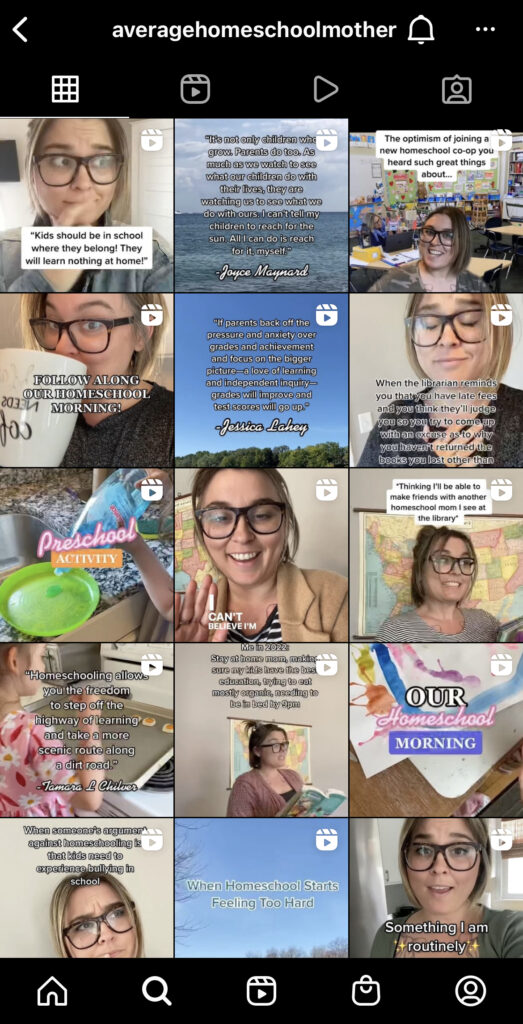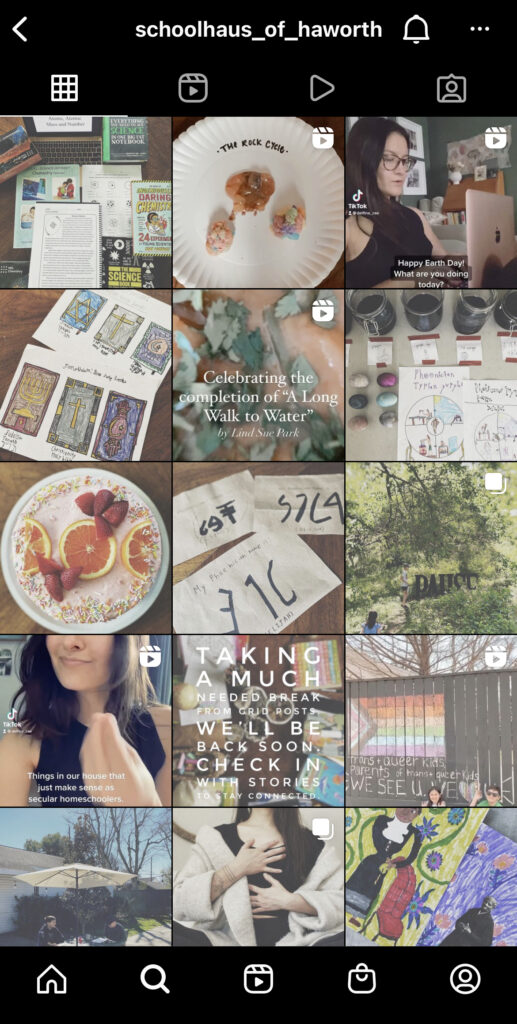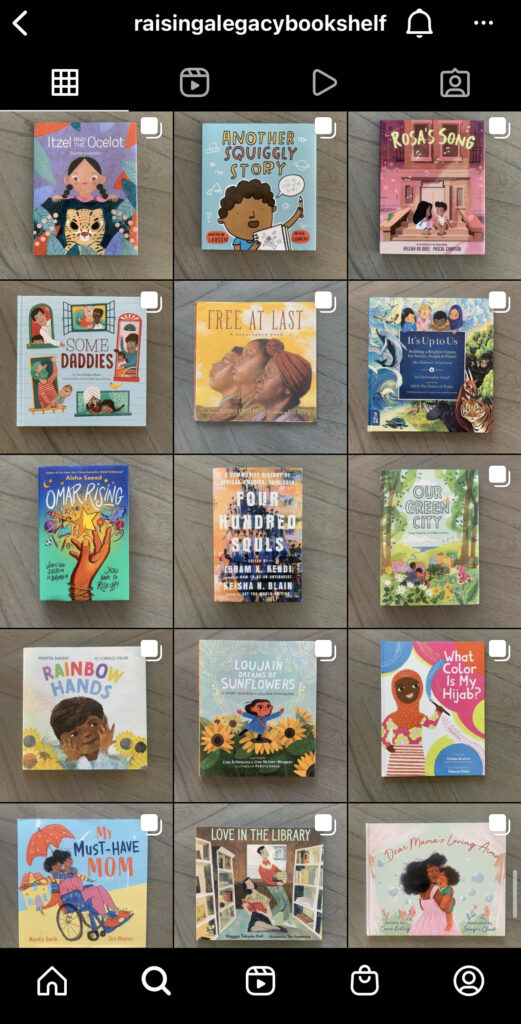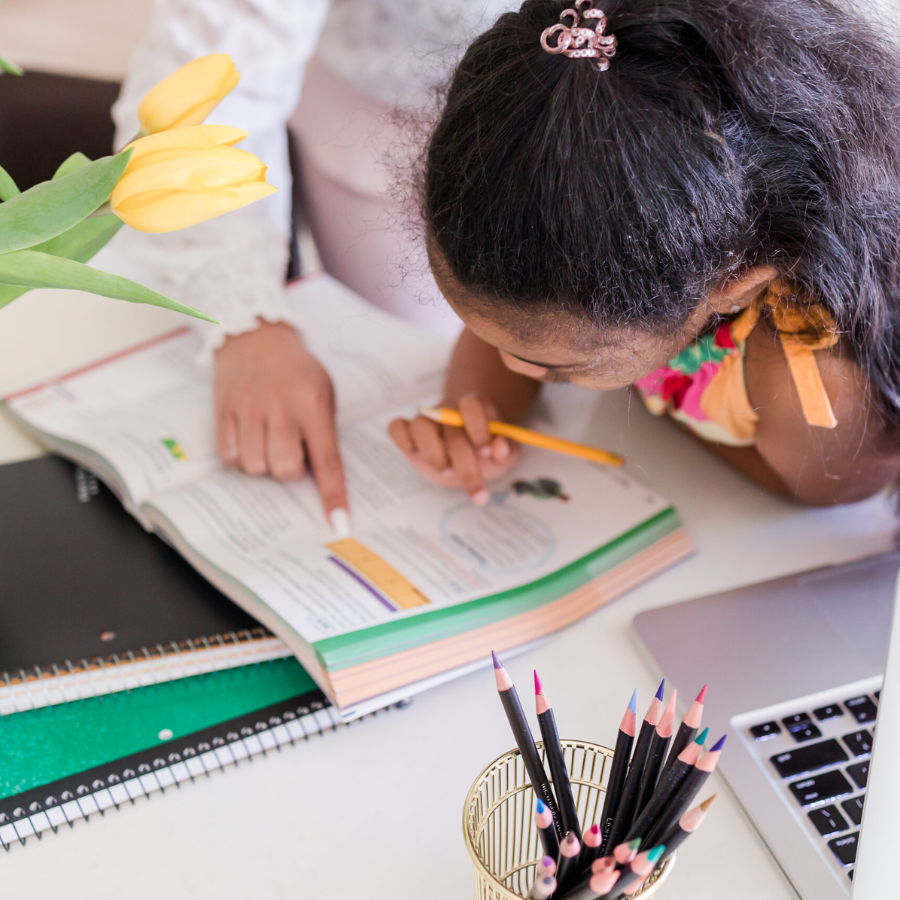It is no secret that if you Google “homeschool” or “how to homeschool in [enter your state],” you will come across a lot of religious and faith-based content. The major homeschool organizations I’ve looked into both at the state and national levels identify as Christian organizations. I’m in a few online homeschool groups, and I’ve seen people direct new homeschooling parents to these organizations without considering that they are biased. They may suggest these sites because they do provide comprehensive overviews of homeschooling, but they also promote a very specific religion. Scrolling through their sites, you will find religious-leaning resources and linked articles that espouse teaching your children “the truth.” Which is fine if that is what you’re into. But where are the secular options?
And when it comes to homeschool blogs, YouTube channels, Instagrams, and TikToks, much of the content is overwhelmingly religious and white. Very WASP-y. Many of these accounts promote curricula that are religious. These curricula have free, printable options (hence why they are ubiquitous), and they gloss over or straight-up omit crucial facts and historical figures. Again, that may be your jam, but for secular homeschoolers like myself, it is not.
My Vision for a Feminist Homeschool
I strive for my homeschooling to be about guiding my kids through learning by providing them with the best resources I can, resources that are inclusive, diverse, and feminist. I try to include lessons, books, videos, articles, and other media that encourage them to ask questions, explore their own interests, and learn from multiple perspectives, especially historically marginalized perspectives that most of us do not encounter until college, if at all. At first, it felt impossible to get ahold of a curriculum that looked this way. After digging a little more and finding the right people on social media, it became a lot easier.
Are you planning to homeschool your children next school year, or perhaps know of a family who is? Are you looking for summer learning activities to share with the kids in your life? While it may be challenging to find secular homeschool resources online amid whitewashed Christian fundamentalism, it is not impossible. Here are some secular curriculum choices, Instagram and TikTok accounts, and activities my children have completed that you might want to check out.
Secular / Non-Religious Curriclum
Build Your Library (Multi-Subjects): BYL is a literature-based curriculum that ties together the learning of history, literature, science, and art. The book lists offer choices from authors of all backgrounds. The creator organized the learning schedule according to an overarching historical timeline and theme.
Woke Homeschooling (History): This is a conscious U.S. history curriculum created for grades 3-12. The focus is on teaching a decolonized history, with more focus on underrepresented voices. The main books required to use this are A Young People’s History of the United States by Howard Zinn and An Indigenous People’s History of the United States by Roxanne Dunbar-Ortiz. A mother fed up with the lack of a secular history curriculum for her kids created this from the ground up, and it looks amazing.
Brave Writer (Writing/Language Arts): This curriculum promises to make writing and learning grammar fun through engaging activities that cater to your child’s age and learning stage. It includes lessons that connect to a monthly read-aloud novel. I think we’re definitely going with this one for ELA this coming school year.
Secular Homeschoolers on Social Media
These content creators are doing so much for the secular homeschool community!
Average Homeschool Mother- Instagram // Tiktok

Chelsea’s content is hilarious and relatable. She’s funny, answers questions, and frequently shares ideas and resources for secular homeschoolers.
Schoolhaus of Haworth – Instagram

Delfina shares about homeschooling from a neurodiverse perspective. She has so many creative ideas for lessons and approaching homeschooling in general. A lot of inspiration here.
Raising a Legacy – Instagram

Niki has two pages to check out: one where she shares resources and information specific to homeschooling, and one where she shares and reviews all kinds of books for children. On the book page, she shares her thoughts on the titles, and even includes discussion questions you can use with your child.
Sample Activity
[Please note: I am not an education expert. I taught high school-level English for a short time many moons ago, but that was very different from what homeschooling requires of parents and other caregivers. This was something I came up with that was based on my kiddos’ interests at a specific point in time. They truly enjoyed themselves!]
Retelling Fairy Tales: (This is probably better suited to younger kiddos, like 5-11 or 12)
- Start by choosing a fairy tale to discuss and read with the kiddos. They might want to choose a specific one, but if you choose, I recommend selecting one that has a lot of retellings available, like “The Three Little Pigs.”
- Choose the original tale, and one or two more retellings to go with it. For this, you could shop your shelf, make a trip to the library, or look up read-alouds for the books on Youtube.
- Start with the original tale. For younger kids perhaps unfamiliar with the story, you could ask them to make predictions based on the cover. For older kids, ask them what they know or remember about the story. Then, read together.
- Discuss questions or comments the kids may have that arose during the story, and see where that conversation leads. Somewhere in there, pose the question: What if this story was told from another point of view? What would happen then?
- Writing activity: Re-write the story of “The Three Little Pigs” from a different character’s point of view. Be creative and have fun. It’s more exciting for the kids if they have adults join in with them, too.
- Everyone shares their stories aloud. Discuss. What changed about the story? What remained the same? Does changing the narrator add to or limit the story?
- Read The True Story of the Three Little Pigs, an oldie but goodie. Finish up this activity by going back to points that may have arisen earlier about point of view.
Key Takeaway:
Perspective matters. Stories change depending on who is telling it.
This is a fun activity for practicing critical thinking and writing skills, and could also be used to introduce history as a subject, and about how who is telling a story matters.
Additional Resources
A Latinx Heritage Month lesson from Claudia. Saving this for the fall!
Raising Critical Thinkers by Julie Bogart
How to Raise an Antiracist by Ibram X. Kendi



I 100% agree with this. Bookshark is one that I didn’t see in your list, and while Beautiful Feet is *technically* religiously affiliated, the books and lessons don’t have any religious undertones (the religious studies are a separate download).
Hi Nina!
I would love to throw my resource into the mix as well! I created TheRadicalAgenda.com after my sons’ school district’s Board of Education made the front cover of Time Magazine for discussing “CRT” at a Board of Education meeting. The Radical Agenda mission is to provide parents and teachers with a resource list of accurate and age-appropriate books for kids on all the events, topics, and people who aren’t usually included in the history materials. The website is free to use and I do offer a spiral-bound planner with additional resources, and I donate a large portion of proceeds from planner sales to human rights organizations.